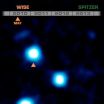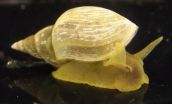(Press-News.org) A study tracing the evolution of HIV in North America involving researchers at Simon Fraser University has found evidence that the virus is slowly adapting over time to its human hosts. However, this change is so gradual that it is unlikely to have an impact on vaccine design.
"Much research has focused on how HIV adapts to antiviral drugs—we wanted to investigate how HIV adapts to us, its human hosts, over time," says lead author Zabrina Brumme, an assistant professor in SFU's Faculty of Health Sciences.
The study, published today in PLOS Genetics, was led by Brumme's lab in collaboration with scientists at the BC Centre for Excellence in HIV/AIDS, UBC, and sites across the U.S. including Harvard University, the New York Blood Center and the San Francisco Department of Public Health.
"HIV adapts to the immune response in reproducible ways. In theory, this could be bad news for host immunity—and vaccines—if such mutations were to spread in the population," says Brumme. "Just like transmitted drug resistance can compromise treatment success, transmitted immune escape mutations could erode our ability to naturally fight HIV."
Researchers characterized HIV sequences from patients dating from 1979, the beginning of the North American HIV epidemic, to the modern day.
The team reconstructed the epidemic's ancestral HIV sequence and from there, assessed the spread of immune escape mutations in the population.
"Overall, our results show that the virus is adapting very slowly in North America," says Brumme. "In parts of the world harder hit by HIV though, rates of adaptation could be higher."
The study ends with a message of hope, Brumme adds. "We already have the tools to curb HIV in the form of treatment—and we continue to advance towards a vaccine and a cure. Together, we can stop HIV/AIDS before the virus subverts host immunity through population-level adaptation."
Numerous SFU researchers contributed to the analysis, which required the careful recovery of viral RNA from historic specimens followed by laboratory culture. A trio of SFU graduate students, including health sciences student Laura Cotton, shared the lead author role.
"It was painstaking work," says Cotton, "but it was fascinating to study these isolates in the lab, knowing that they had played an important role in the history of HIV on our continent." INFORMATION:
Photos: http://at.sfu.ca/wHUpmL
Paper: http://at.sfu.ca/YYKEkl
Numerous undergraduate students, graduate students, postdocs and faculty including adjunct professor Art Poon and associate professor Mark Brockman were among other co-authors.
The Canadian Institutes of Health Research (CIHR) and the Michael Smith Foundation for Health Research (MSFHR) funded the study.
Simon Fraser University is consistently ranked among Canada's top comprehensive universities and is one of the top 50 universities in the world under 50 years old. With campuses in Vancouver, Burnaby and Surrey, B.C., SFU engages actively with the community in its research and teaching, delivers almost 150 programs to more than 30,000 students, and has more than 125,000 alumni in 130 countries.
Simon Fraser University: Engaging Students. Engaging Research. Engaging Communities.
Researchers trace HIV evolution in North America
2014-04-25
ELSE PRESS RELEASES FROM THIS DATE:
Star is discovered to be a close neighbor of the Sun and the coldest of its kind
2014-04-25
A "brown dwarf" star that appears to be the coldest of its kind -- as frosty as Earth's North Pole -- has been discovered by a Penn State University astronomer using NASA's Wide-field Infrared Survey Explorer (WISE) and Spitzer Space Telescopes. Images from the space telescopes also pinpointed the object's distance at 7.2 light-years away, making it the fourth closest system to our Sun.
"It is very exciting to discover a new neighbor of our solar system that is so close," said Kevin Luhman, an associate professor of astronomy and astrophysics at Penn State and a researcher ...
New genome-editing platform significantly increases accuracy of CRISPR-based systems
2014-04-25
A next-generation genome editing system developed by Massachusetts General Hospital (MGH) investigators substantially decreases the risk of producing unwanted, off-target gene mutations. In a paper receiving online publication in Nature Biotechnology, the researchers report a new CRISPR-based RNA-guided nuclease technology that uses two guide RNAs, significantly reducing the chance of cutting through DNA strands at mismatched sites.
"This system combines the ease of use of the widely adopted CRISPR/Cas system with a dimerization-dependent nuclease activity that confers ...
Scientists at the UA make critical end-stage liver disease discovery
2014-04-25
A team of researchers in the University of Arizona's College of Pharmacy has discovered a molecular pathway that could be key to creating new therapeutics that would slow or even reverse the progression of end-stage liver disease.
Although cirrhosis of the liver is most commonly associated with alcohol or drug abuse, the condition – marked by scar tissue replacing healthy liver tissue – also can result from viral hepatitis, obesity and diabetes, as well as certain inherited diseases. According to the National Institutes of Health, cirrhosis is the 12th leading cause of ...
Biologists discover a key regulator in the pacemakers of our brain and heart
2014-04-25
Biologists have discovered how an outer shield over T-type channels change the electrochemical signaling of heart and brain cells. Understanding how these shields work will help researchers eventually develop a new class of drugs for treating epilepsy, cardiovascular disease and cancer.
The study from the University of Waterloo is published in the Journal of Biological Chemistry today and is featured as the "Paper of the Week" for its significance.
The researchers discovered T-type channels in the pond snail, Lymnaea stagnalis, can shift from using calcium ions to ...
Study finds almost half of homeless men had traumatic brain injury in their life
2014-04-25
TORONTO, April 25, 2014—Almost half of all homeless men who took part in a study by St. Michael's Hospital had suffered at least one traumatic brain injury in their life and 87 per cent of those injuries occurred before the men lost their homes.
While assaults were a major cause of those traumatic brain injuries, or TBIs, (60 per cent) many were caused by potentially non-violent mechanisms such as sports and recreation (44 per cent) and motor vehicle collisions and falls (42 per cent).
The study, led by Dr. Jane Topolovec-Vranic, a clinical researcher in the hospital's ...
Genome regions once mislabeled 'junk' linked to heart failure
2014-04-25
Large sections of the genome that were once referred to as "junk" DNA have been linked to human heart failure, according to research from Washington University School of Medicine in St. Louis.
So-called junk DNA was long thought to have no important role in heredity or disease because it doesn't code for proteins. But emerging research in recent years has revealed that many of these sections of the genome produce RNA molecules that, despite not being proteins, still have important functions in the body. RNA is a close chemical cousin to DNA.
Molecules now associated ...
'Beneficial inflammation' may promote healing in pulmonary fibrosis
2014-04-25
Inflammation has long been considered an integral part of the biological process that leads to deadly scarring in idiopathic pulmonary fibrosis. New research at National Jewish Health, however, suggests that a little inflammation may also be crucial to the healing and repair processes in the lungs. Elizabeth Redente, PhD, assistant professor of cell biology at National Jewish Health, and her colleagues report in the April 2014 issue of the American Journal of Respiratory Cell and Molecular Biology that the pro-inflammatory cytokine TNF-α can speed recovery of injured ...
Buzz and Bite Highlighted In New Malaria Museum
2014-04-25
Chocolate Moose Media's Buzz and Bite public service announcements (PSA) have had a profound effect combatting the spread of malaria around the world. Now the series will be featured in a new museum in Dublin, Ireland, dedicated to malaria.
Buzz and Bite comprises 30 animated spots of either 30 or 60 seconds that feature two female anopheles (malaria-carrying) mosquitos. Creator and company president Firdaus Kharas uses humour as the two winged characters try to infect every human on the planet. The series teaches about the value of insecticide-treated sleeping nets ...
Revolutionary 'metamaterial' has potential to reshape neurosurgery
2014-04-25
Philadelphia, Pa. (April 25, 2014) – The development of graphene—a highly advanced metamaterial with many unique and varied properties—may lead to exciting new applications in the diagnosis and treatment of neurological diseases, according to a report in the May issue of Neurosurgery, official journal of the Congress of Neurological Surgeons. The journal is published by Lippincott Williams & Wilkins, a part of Wolters Kluwer Health.
Tobias A. Mattei, MD, of Invision Health/Brain & Spine Center – Buffalo, New York and Azeem A. Rehman, BS, of The University of Illinois ...
It's not all wedded bliss: Marital stress linked to depression
2014-04-25
MADISON, Wis. – Marital stress may make people more vulnerable to depression, according to a recent study by University of Wisconsin-Madison researchers and their colleagues.
The long-term study, published in the April 2014 Journal of Psychophysiology, shows that people who experience chronic marital stress are less able to savor positive experiences, a hallmark of depression. They are also more likely to report other depressive symptoms.
The findings are important, says study leader Richard Davidson, UW-Madison William James and Vilas Professor of Psychology and Psychiatry, ...




